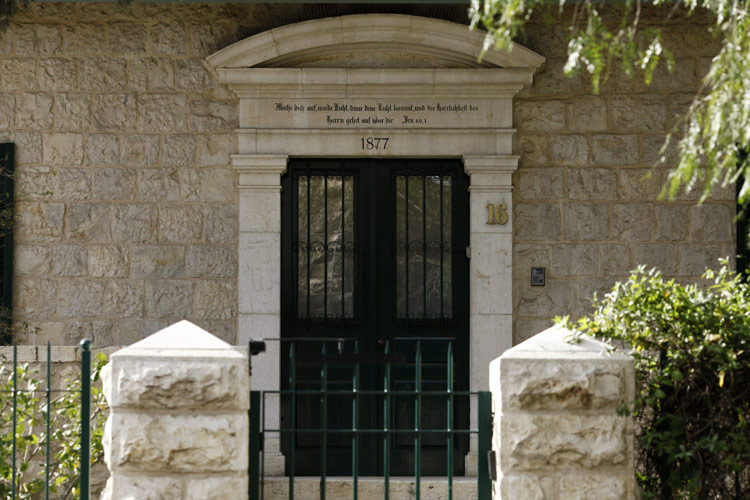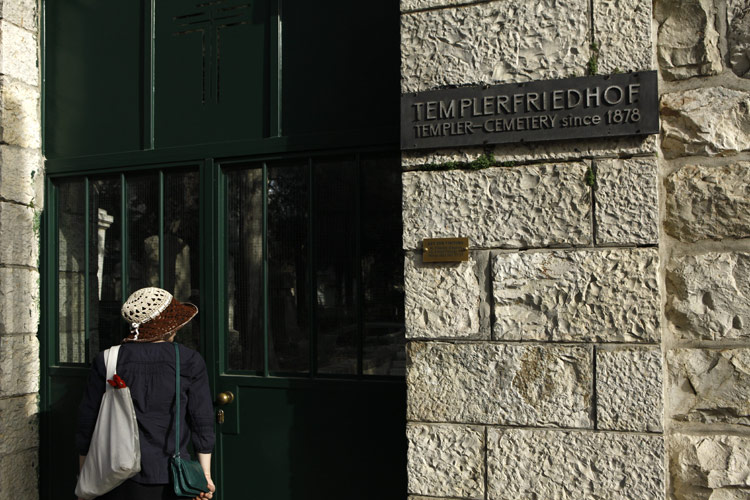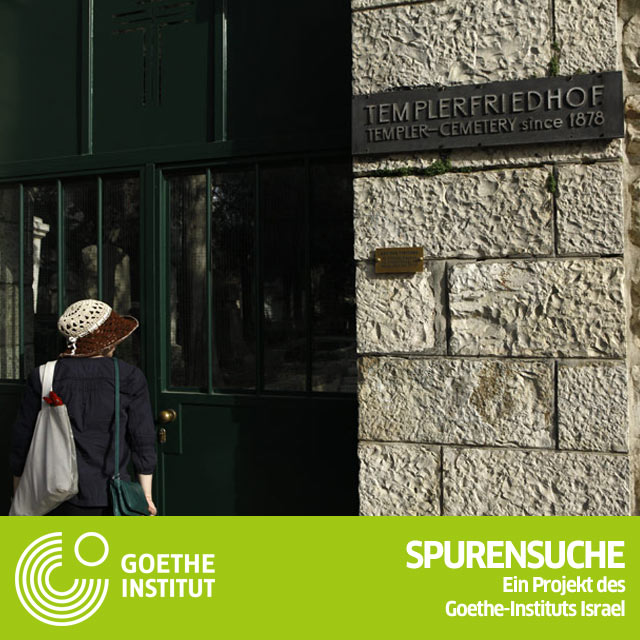Israel:German Colony, Deutsche Kolonie, Moshawa Germanit in Jerusalem: Unterschied zwischen den Versionen
(Die Seite wurde neu angelegt: „© Goethe-Institut Anyone who strolls along Emek Refaim Street in Jerusalem – which transla…“) |
K (Newline insert before newBox via script) |
||
| (4 dazwischenliegende Versionen von 2 Benutzern werden nicht angezeigt) | |||
| Zeile 7: | Zeile 7: | ||
Many of them were skilled craftsmen. They introduced new agricultural machinery and irrigation systems, built cement factories and wineries, tended their front gardens, set up sports grounds, cinemas, pubs and of course final resting places. The Templer Cemetery in Jerusalem is right on Emek Refaim Street, hidden behind a wall and high iron gates. | Many of them were skilled craftsmen. They introduced new agricultural machinery and irrigation systems, built cement factories and wineries, tended their front gardens, set up sports grounds, cinemas, pubs and of course final resting places. The Templer Cemetery in Jerusalem is right on Emek Refaim Street, hidden behind a wall and high iron gates. | ||
| − | It represents the last German trace from this era, because the Templers settled in Haifa, Jaffa and Tel Aviv at first before they founded their colony in Jerusalem, which was much less easily accessible. Their dynamic involvement was one of the reasons for the rapid development of the neighbouring urban districts Baka, Talpiot and Katamon, where a large number of prosperous Christian Arabs also settled.{{#newBox:listbox}} | + | It represents the last German trace from this era, because the Templers settled in Haifa, Jaffa and Tel Aviv at first before they founded their colony in Jerusalem, which was much less easily accessible. Their dynamic involvement was one of the reasons for the rapid development of the neighbouring urban districts Baka, Talpiot and Katamon, where a large number of prosperous Christian Arabs also settled. |
| + | {{#newBox:}} | ||
| + | {{#Audio: http://lbs.goethe.de/mediawiki/images/a/ae/ISRAEL_8_deutsche-kolonie-jerusalem_deutsch.mp3 | Report about the German Colony (German)|[[Datei:ISRAEL_MP3_008.jpg]]||German Colony, Deutsche Kolonie, Moshawa Germanit in Jerusalem}} | ||
| + | {{#Audio: http://lbs.goethe.de/mediawiki/images/4/47/ISRAEL_8_deutsche-kolonie-jerusalem_hebrew.mp3 | Report about the German Colony (Hebrew)|[[Datei:ISRAEL_MP3_008.jpg]]||German Colony, Deutsche Kolonie, Moshawa Germanit in Jerusalem}}{{#newBox:listbox}} | ||
==More== | ==More== | ||
| − | * [[The end of the Templers / A good address]]{{#newBox:listbox}} | + | * [[Israel:The end of the Templers / A good address | The end of the Templers / A good address]]{{#newBox:listbox}} |
| + | |||
==Related links== | ==Related links== | ||
* [http://en.wikipedia.org/wiki/German_Colony,_Jerusalem German Colony, Jerusalem (en.wikipedia.org)] | * [http://en.wikipedia.org/wiki/German_Colony,_Jerusalem German Colony, Jerusalem (en.wikipedia.org)] | ||
| Zeile 18: | Zeile 22: | ||
A project by the [http://www.goethe.de/ins/il/lp/deindex.htm Goethe-Institut Israel] | A project by the [http://www.goethe.de/ins/il/lp/deindex.htm Goethe-Institut Israel] | ||
| − | Author: [[Gisela Dachs]] | + | Author: [[Israel:Gisela Dachs (Author) | Gisela Dachs]] |
| − | Photos: [[Noa Ben-Shalom]] | + | Photos: [[Israel:Noa Ben-Shalom (Photos) | Noa Ben-Shalom]] |
Aktuelle Version vom 4. September 2020, 16:29 Uhr
Anyone who strolls along Emek Refaim Street in Jerusalem – which translates literally as “Valley of the Ghosts” – can only imagine the little Swabian village that the Templers once started to build near the Old Town in 1873. The first house on the bleak stony field was built by Mätthaus Frank, a master miller. Above the entrance you can still clearly see the inscription: “The Lord has helped us up to here”. Christian faith and the Bible were part and parcel of all ventures undertaken by the industrious Pietists, who wanted to modernise the Holy Land but also take possession of it by doing so.
Haifa, Jaffa, Tel Aviv and Jerusalem
Many of them were skilled craftsmen. They introduced new agricultural machinery and irrigation systems, built cement factories and wineries, tended their front gardens, set up sports grounds, cinemas, pubs and of course final resting places. The Templer Cemetery in Jerusalem is right on Emek Refaim Street, hidden behind a wall and high iron gates.
It represents the last German trace from this era, because the Templers settled in Haifa, Jaffa and Tel Aviv at first before they founded their colony in Jerusalem, which was much less easily accessible. Their dynamic involvement was one of the reasons for the rapid development of the neighbouring urban districts Baka, Talpiot and Katamon, where a large number of prosperous Christian Arabs also settled.
German Traces in Israel
A project by the Goethe-Institut Israel
Author: Gisela Dachs
Photos: Noa Ben-Shalom



